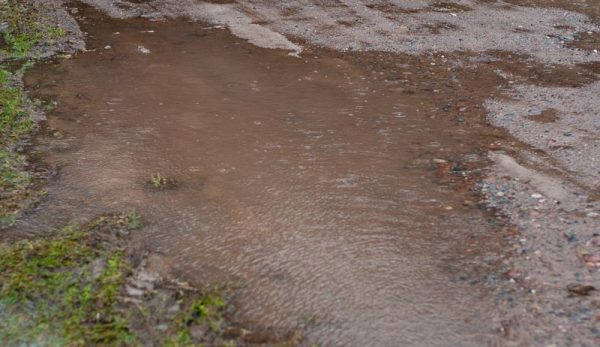
Up here in Northern Wisconsin, spring thaw can be a dramatic time of year. As temperatures warm up, huge quantities of snow and ice start to melt. And the right combination of meltwater, shade and topography can present highly challenging conditions.
On my farm, the upper portion of the driveway is shaded by tall coniferous trees growing on either side. East of the driveway lies a flat yard. West of the driveway, the ground slopes downhill.
Even with frequent plowing, a formidable layer of snow and ice accumulates over the driveway during the course of winter. In a perfect world, the snow and ice would sublimate directly from their solid states to gaseous forms, skipping the water stage entirely.
Almost as good would be for meltwater to flow down the western hill and avoid muddying the driveway. This, I eventually figured out, could be realized by installing a driveway culvert.
Read more: Got puddles? A simple ditch can solve the problem.
A Difficult Driveway
Instead, the specific conditions of my upper driveway have historically conspired to create difficult spring conditions. The shade from the conifers allows the snow and ice to survive longer into spring. And the crown of the driveway prevents meltwater on the eastern side from flowing down the western slope. Instead, it forms large puddles on the eastern side that freeze at night into hard, slippery layers.
Almost as bad is when mushy snow rutted up by tire tracks freezes solid in contorted shapes. This makes vehicle passage bumpy at best and impossible at worst.
Following one particularly long and memorable winter (“memorable” in the sense of, “it wasn’t fun at all, but we’ll never forget it,”) I decided to conquer the driveway conditions with a small construction project. I challenged myself to install a culvert underneath the driveway, with a drain on the eastern side carrying water under the driveway to the western slope.
How to Install a Culvert to Drain Driveway Water
Digging the culvert wasn’t too difficult. A compact utility tractor with a backhoe attachment was sufficient to dig a trench. In this I laid a PVC pipe with an elbow joint rising up to form the drain.
By placing the drain hole in a naturally low spot of the yard (just off the edge of the driveway), the drain was effectively designed to gather water from pretty much the entire eastern side of the upper driveway.
The results of the culvert have been well worth the construction effort. At the start of winter, I place a plastic cap over the drain to prevent snow and ice from clogging the pipe. I also place a stake in the ground to mark the location of the drain.
As spring approaches and the snow begins to melt, I grab a shovel and digging bar and chip away the ice until I find the drain cap and remove it. This provides the accumulating meltwater an avenue of escape.
Read more: Digging bars are good for more than just digging!
So Satisfying
It’s strangely satisfying to watch a significant volume of water rush down a drain like a whirlpool, dramatically improving the condition of the driveway in the process. Without puddles of water freezing and thawing with temperature swings, the driveway stays much drier even as the snow melts.
It also helps reduce the amount of slushy snow, diminishing rutting and improving driving conditions during the thaw.
Putting in a driveway culvert takes some time and effort. But the results are beneficial all year round. Also, it truly changes the game for areas that encounter challenging spring thaws.





